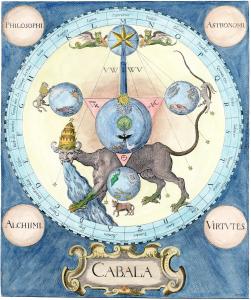The Kabbalah it seems, is now fashionable, what with Hollywood types studying it. The Kabbalah along with other Jewish works, demonstrates that the Hebrews certainly entertained the idea of reincarnation.
Of course there were Christian Kabbalists who used the technique with missionary zeal. A famous one being Raymond Lull.
Gilgul describes a Kabbalistic concept of reincarnation. In Hebrew, the word gilgul means "cycle" and neshamot is the plural for "souls." Souls are seen to "cycle" through "lives" or "incarnations", being attached to different human bodies over time. Which body they associate with depends on their particular task in the physical world, spiritual levels of the bodies of predecessors and so on. The concept relates to the wider processes of history in Kabbalah, involving Cosmic Tikkun (Messianic rectification), and the historical dynamic of ascending Lights and descending Vessels from generation to generation. The esoteric explanations of gilgul were articulated in Jewish mysticism by Isaac Luria in the 16th century, as part of the metaphysical purpose of Creation.
Of course there were Christian Kabbalists who used the technique with missionary zeal. A famous one being Raymond Lull.
"The Kabbalah is said to represent the hidden wisdom behind the Hebrew scriptures, derived by the Rabbis of the middle ages from still older secret doctrines. The first Jews to call themselves Kabbalists were the Tanaim who lived in Jerusalem about the beginning of the third century B.C. Two centuries later three important Jewish Kabbalists appeared: Jehoshuah ben Pandira; Hillel, the great Chaldean teacher; and Philo Judaus, the Alexandrian Neo-Platonist. During medieval times there were many celebrated Kabbalists, Spain being one of the important seats of their activity. Rabbi Isaac Luria founded a school of the Kabala around 1560, and the great exponent of his teachings, Rabbi Chajim Vital, wrote a famed work called Otz Chiim, or the Tree of Life, from which Baron Knorr von Rosenroth, a Christian Kabbalist, took the Book on the Rashith ha Gilgalim, revolutions of souls, or scheme of reincarnations."The Talmudic Miscellany by Paul Isaac Hershon contains the following quotations from the Kabbalah:
If a man be niggardly either in a financial or a spiritual regard, giving nothing of his money to the poor, or not imparting of his knowledge to the ignorant, he shall be punished by transmigration into a woman.
Know thou that Sarah, Hannah, the Shunamite (2 Kings, iv. 8), and the widow of Zarepta, were each in turn possessed by the soul of Eve.
The soul of Rahab transmigrated into Heber the Kenite, and afterwards into Hannah; and this is the mystery of her words: "I am a woman of a sorrowful spirit" (I Sam. i. 15)- for there still lingered in her soul a sorrowful sense of inherited defilement. . . .
Sometimes the souls of pious Jews pass by metempsychosis into Gentiles, in order that they may plead on behalf of Israel and treat them kindly.Yalkut Reubeni, Nos. 1, 8, 61, 63
Gilgul describes a Kabbalistic concept of reincarnation. In Hebrew, the word gilgul means "cycle" and neshamot is the plural for "souls." Souls are seen to "cycle" through "lives" or "incarnations", being attached to different human bodies over time. Which body they associate with depends on their particular task in the physical world, spiritual levels of the bodies of predecessors and so on. The concept relates to the wider processes of history in Kabbalah, involving Cosmic Tikkun (Messianic rectification), and the historical dynamic of ascending Lights and descending Vessels from generation to generation. The esoteric explanations of gilgul were articulated in Jewish mysticism by Isaac Luria in the 16th century, as part of the metaphysical purpose of Creation.


No comments:
Post a Comment